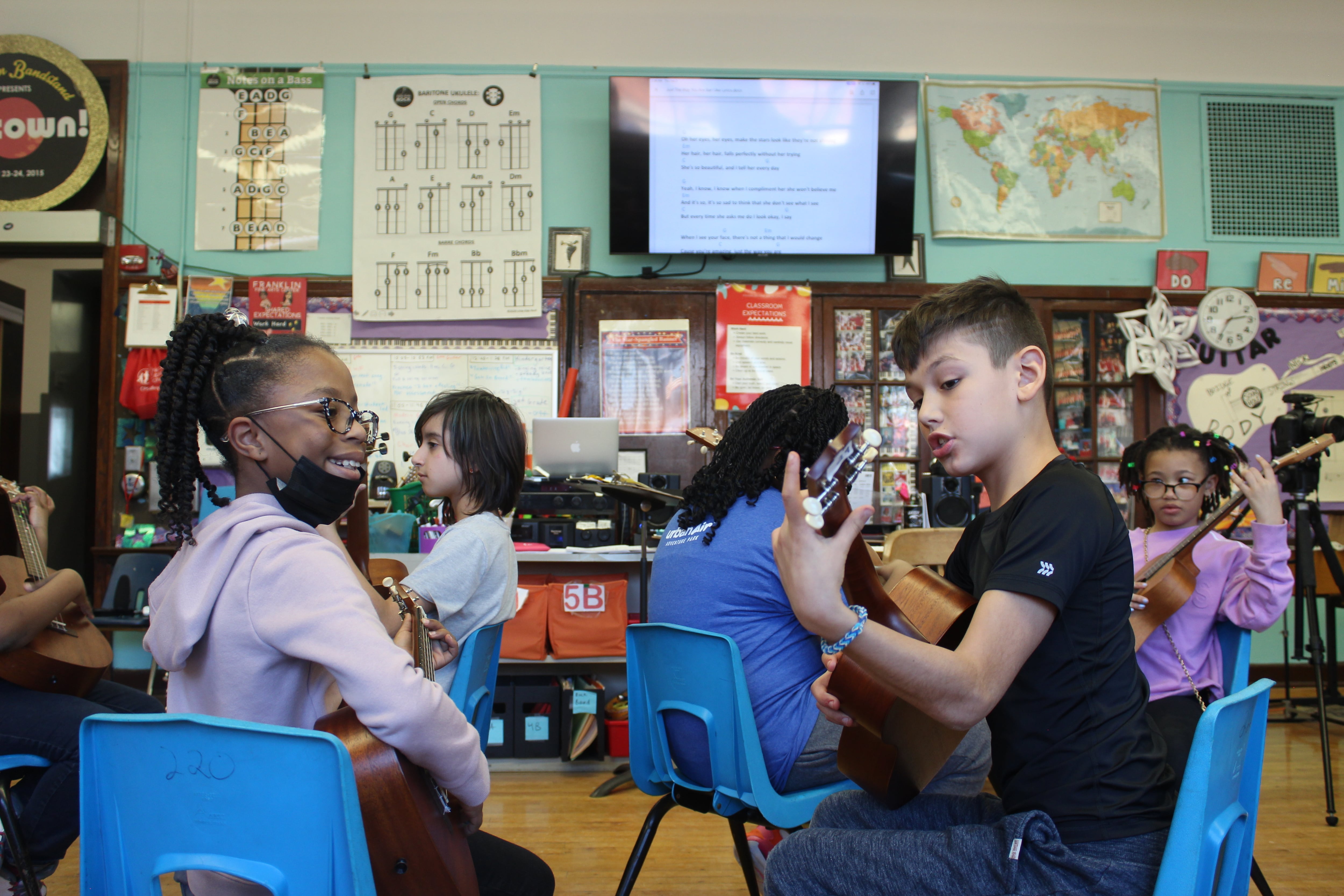Sign up for Chalkbeat’s free weekly newsletter to keep up with how education is changing across the U.S.
School desegregation efforts in a dozen states are getting a $12.5 million infusion from the federal government as part of a new grant program meant to create more diverse schools.
Among the winners are some of the largest districts in the country, including New York City and Chicago, where debates have long raged over how to address the inequities wrought by school segregation. Other winners include a cohort of Maryland districts and the East Baton Rouge Parish in Louisiana, both of which have been home to intense battles over school segregation in recent years.
The grants come as many school communities continue fraught discussions about racial inequities in schools — conversations that ramped up after the murder of George Floyd, but are facing pushback in many states as conservative lawmakers, activists, and some parents fight to end diversity and equity initiatives and curtail teaching about race and racism.
The funding is a small fraction of what the Biden administration initially sought. And there is only so much schools and federal officials can do in the wake of Supreme Court decisions that severely limited desegregation across district lines, and quashed efforts to explicitly take student race into account as part of integration plans.
Still, the grants are the culmination of a years-long effort led by school integration advocates and officials within the Obama and Biden administrations to steer more federal funding to school desegregation. The money is sorely needed, as America’s schools remain highly segregated by race and income but initiatives to fix that often fizzle out.
The result of that isolation, Education Secretary Miguel Cardona said in a statement on Thursday, is that students of color and students from low-income families disproportionately experience “inadequate resources, lesser access to advanced courses, fewer extracurricular offerings, and other tangible inequities.”
The grants are relatively small: The $12.5 million is being divided among 14 initiatives, ranging from $250,000 to $2.8 million. But integration advocates say start-up money like this is essential because it gives schools funding and political cover to launch complicated planning efforts and community conversations that are necessary for initiatives to stick.
“It’s not going to fully solve it,” said Mohammed Choudhury, the former Maryland schools superintendent who oversaw the state’s application that netted $500,000 for its first year of work. But if the money helps shift some policies, “then it’s a big damn deal.”
Maryland will use its money to work on initiatives in the districts of Anne Arundel, Charles, Frederick, Howard, and Montgomery counties. Howard County, notably, faced parent backlash a few years ago when leaders there tried to deconcentrate the share of students from low-income families who attended certain schools.
Each of the Maryland districts has committed to try at least one of three strategies to create more integrated schools. Those include revamping admissions processes to make selective schools more diverse; ensuring dual language schools are accessible to low-income families whose children are learning English; or finding ways to integrate young children across public and private preschools. Much of the money will be spent on family engagement, Choudhury said.
Expanding access to particular programs may not be as controversial or have as sweeping of an effect as other school desegregation strategies, such as changing school boundaries. But Choudhury, who is now a senior advisor to Maryland’s board of education, expects it won’t be drama-free.
“From opportunity-hoarding type tensions and challenges, to people feeling like they are losing something, to people feeling like they could potentially be pitted against each other — all of those things have to be navigated,” he said. “You’ve still got to win hearts and minds.”
New York City, meanwhile, won $3 million for initiatives in parts of Manhattan and Brooklyn that have previously worked to create more integrated middle schools. In Manhattan, officials will work to create a more diverse group of schools serving some 12,000 students, starting with preschool. In Brooklyn, the money will help put middle school integration plans into place, and fund efforts to recruit elementary school families to attend the area’s middle schools.
Recently, some New York City schools have returned to academically screening incoming middle schoolers — a practice integration advocates say fuels segregation. The current mayor and chancellor have shown less interest in school integration than past administrations.
Chicago Public Schools plans to use its $500,000 to hire staff and host community meetings, a spokesperson said. The work is part of several ongoing planning initiatives related to school quality and student admissions, according to a project description.
Fayette County Public Schools in Kentucky plans to use its funding to improve schools in Lexington’s East End, a historically Black community that’s experiencing some gentrification.
“Our aim is to reconnect our East End students with the cultural identity and heritage of their historical neighborhood,” a project description states. “All the while, changing the reputation and perception of East End schools so that they are a source of pride for residents as well as an attractive school choice for more diverse, affluent parents.”
Other winning districts include:
- Anchorage School District in Alaska, which plans to use its funding to create more socioeconomically diverse high school programs by expanding access to career and technical education.
- Hamilton County Schools in Tennessee, which plans to use its money for community engagement as it seeks to “reimagine” student transportation and school access.
- Oakland Unified in California, which will develop an integration plan focused on improving outcomes for students who attend some of the district’s highest-poverty schools.
- Winston-Salem/Forsyth County Schools in North Carolina, which will analyze enrollment patterns and student assignment policies and potentially change attendance boundaries. The money will help fund sessions for students, families, and staff to provide feedback.
Kalyn Belsha is a senior national education reporter based in Chicago. Contact her at kbelsha@chalkbeat.org.






